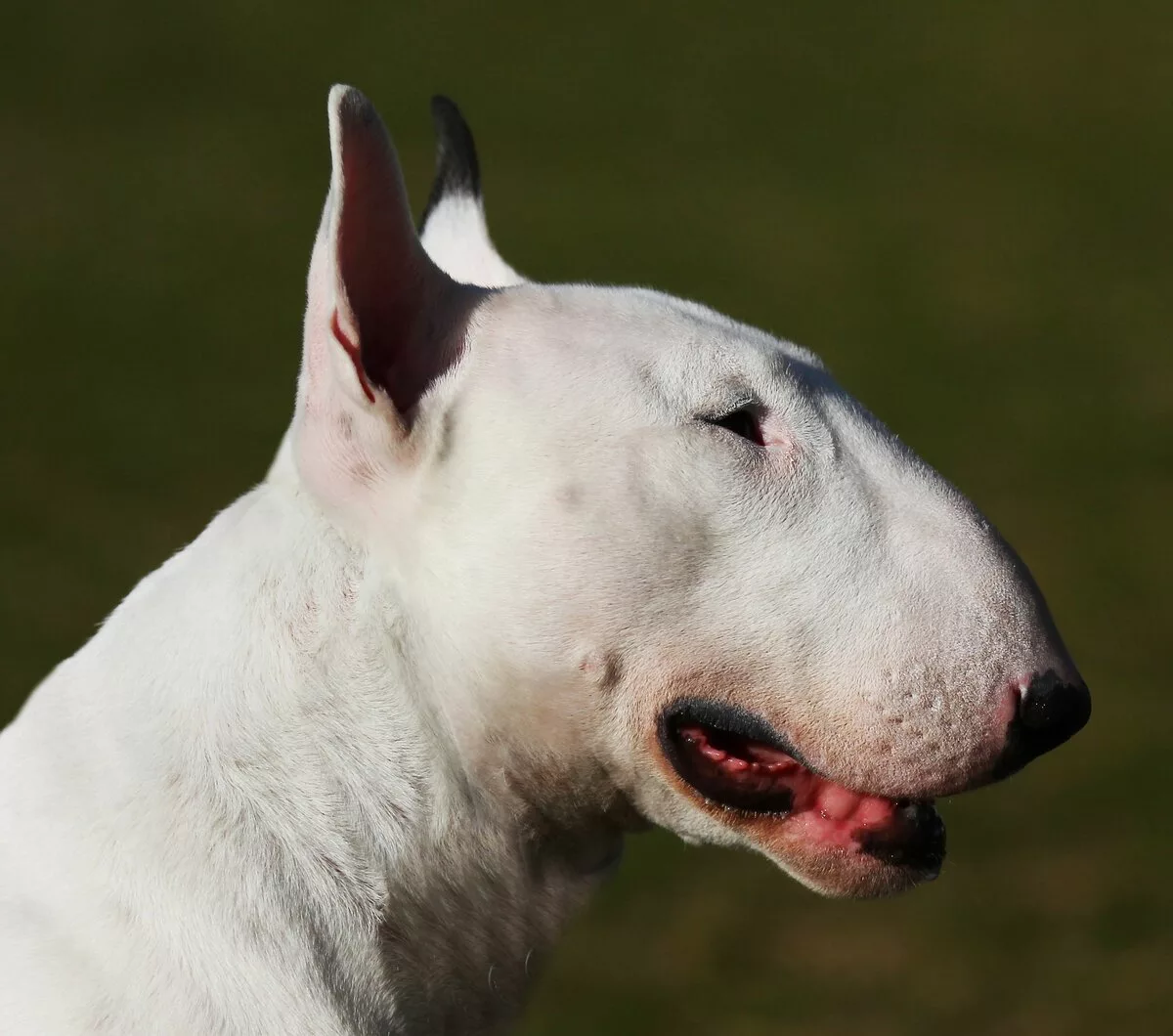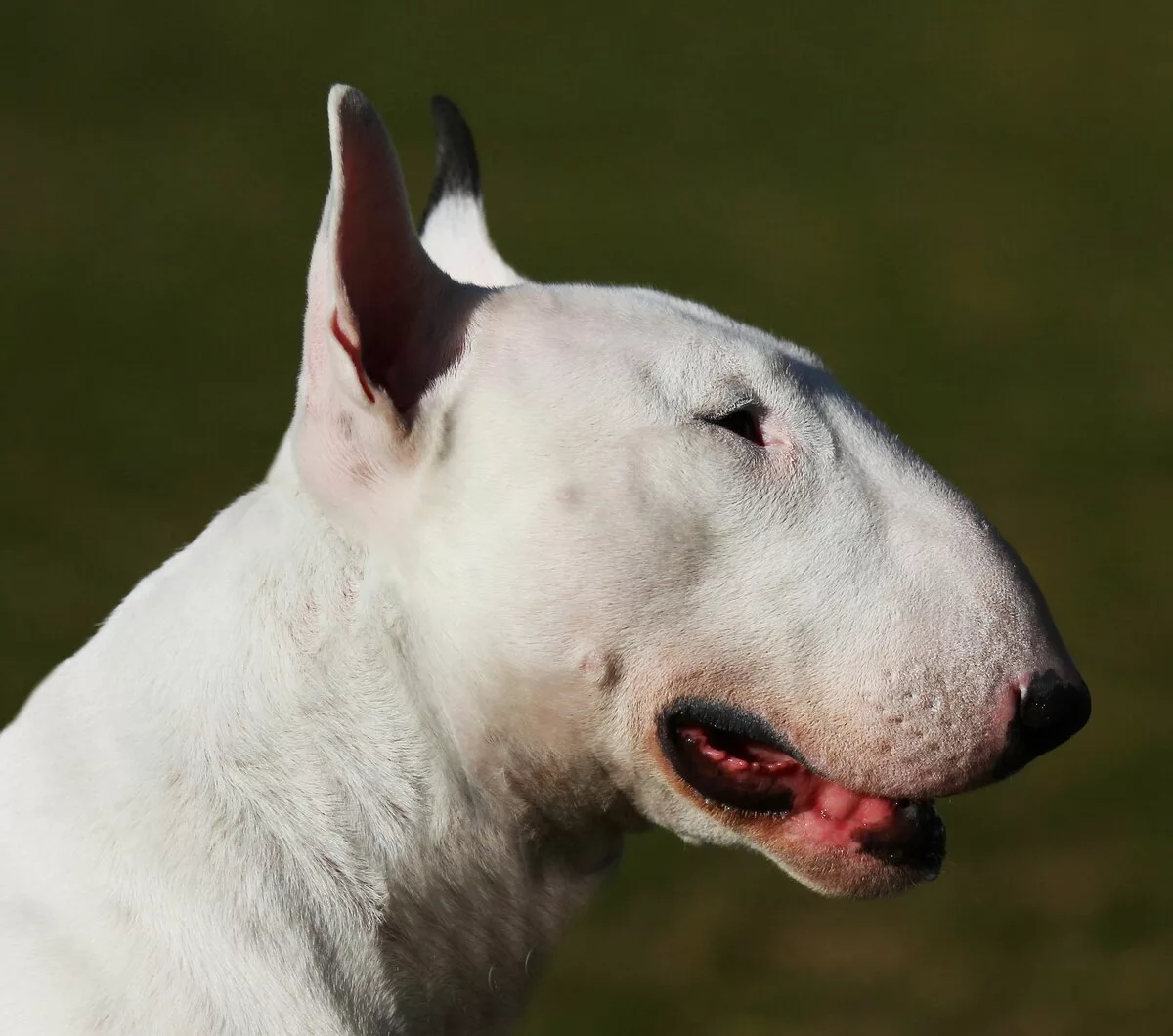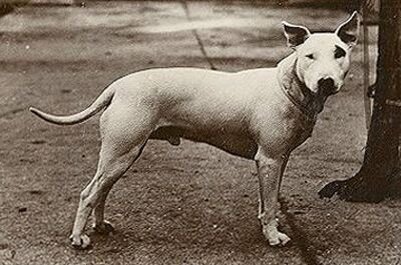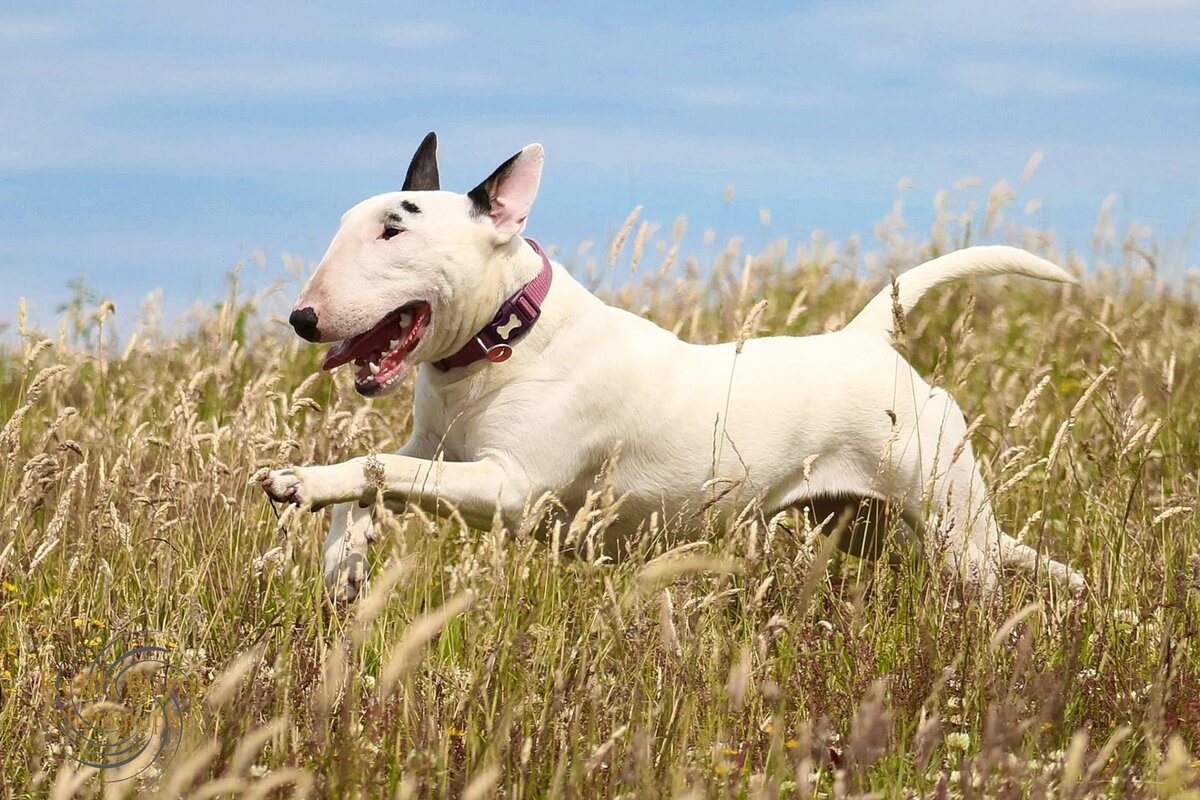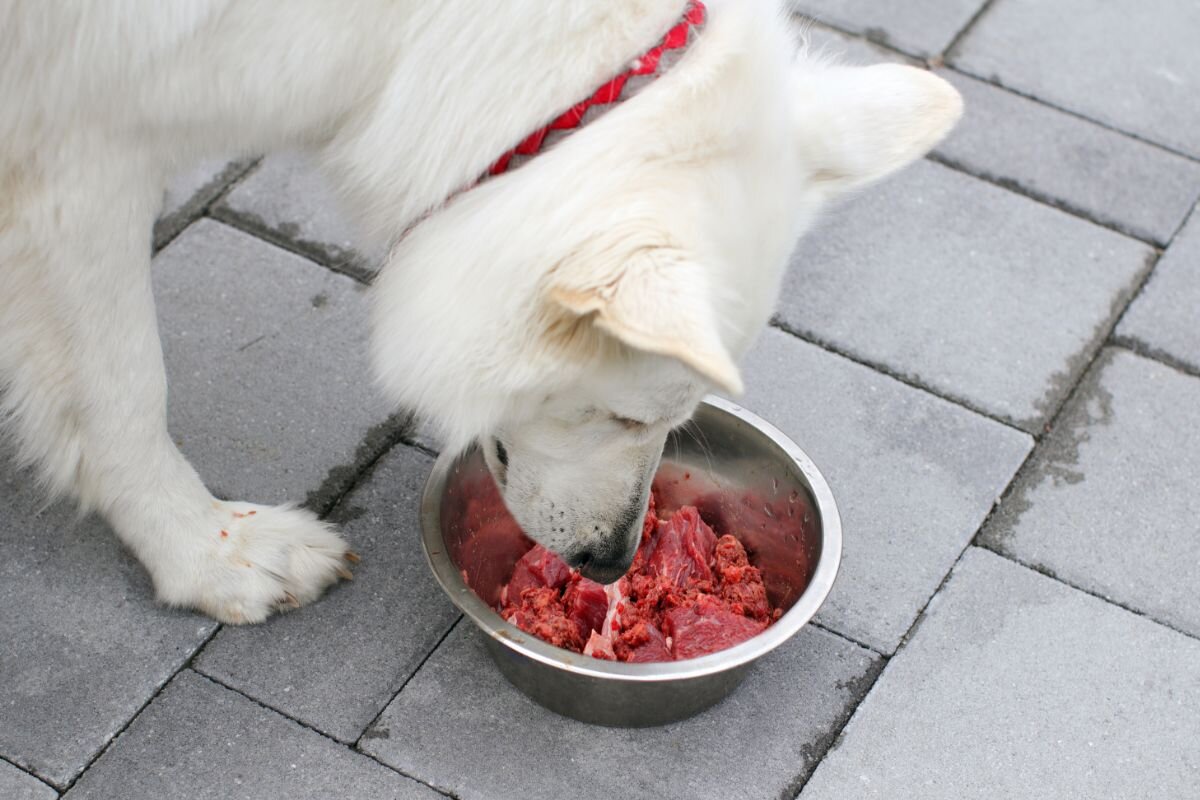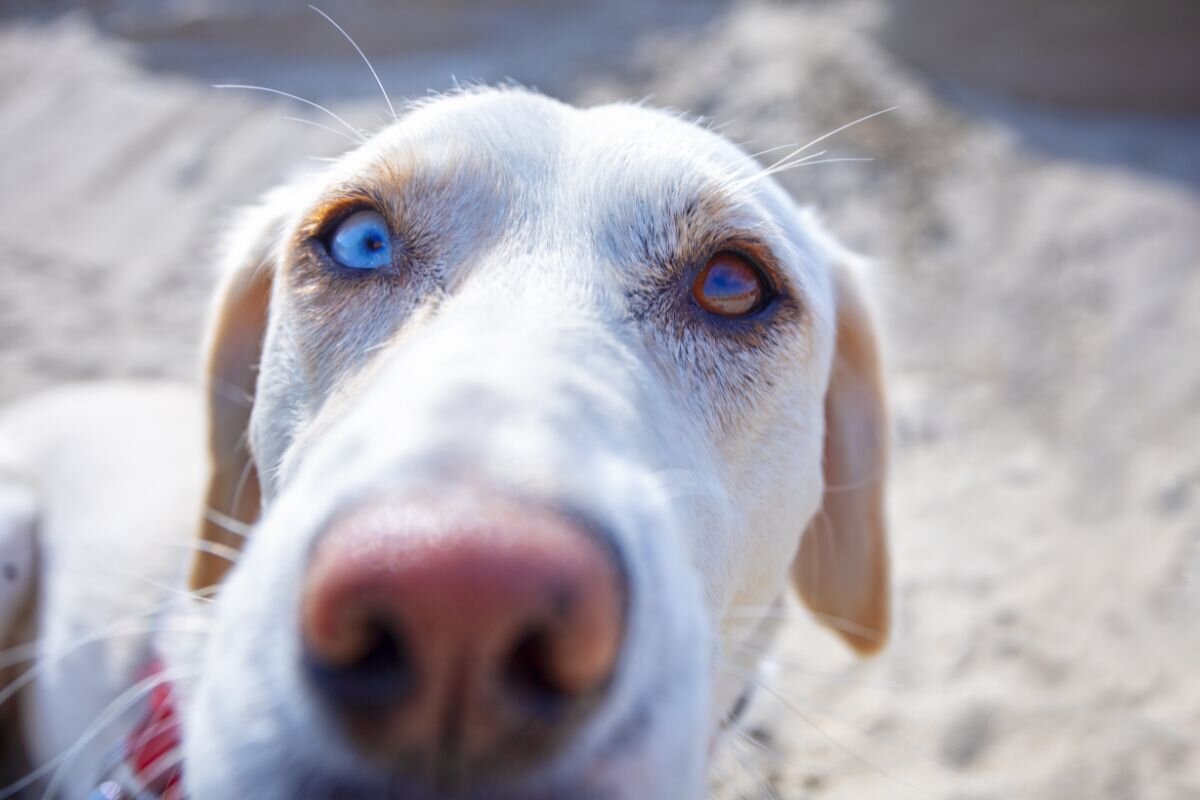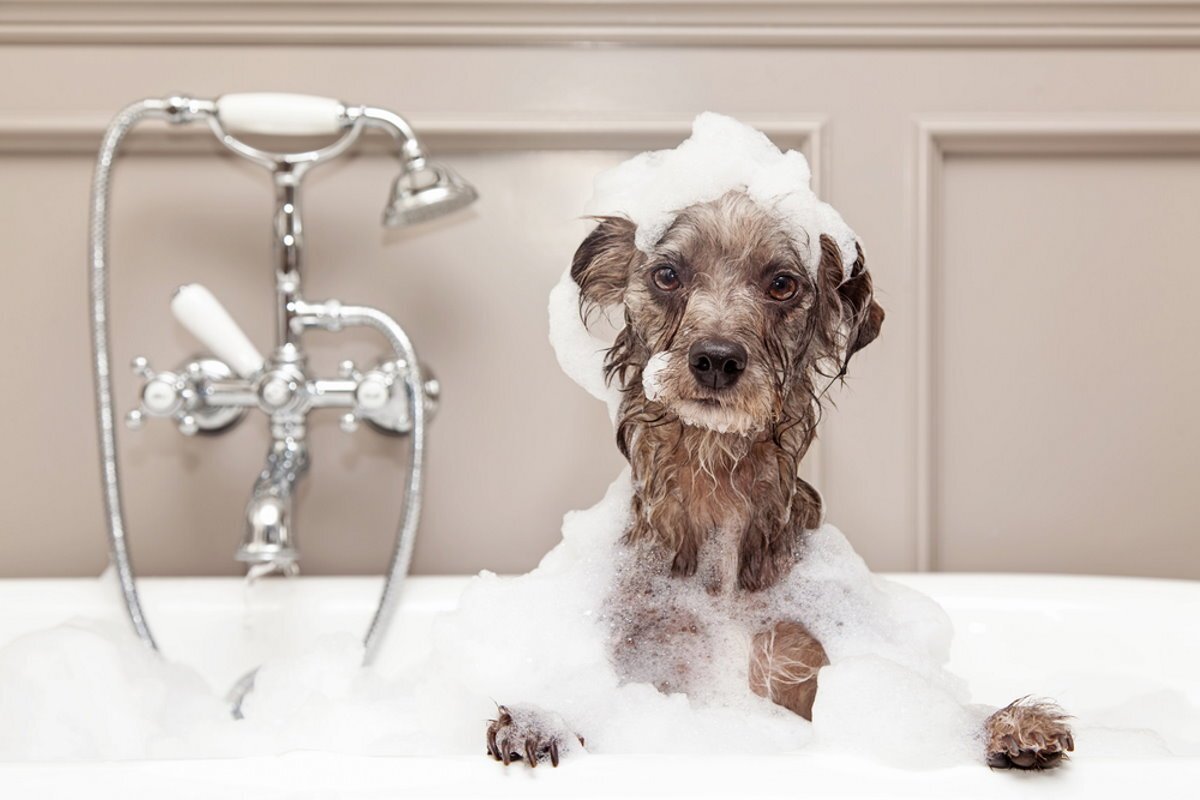Many people know the Bull Terrier breed as dangerous and even call representatives of this breed "killer" dogs. Although this statement is fundamentally incorrect. But few people know how people disfigured this dog through selection and added many health problems to it.
Let's look at the history of the breed and find out what is wrong with the Bull Terrier.
History of the breed
In the 19th century, one of the entertainments, both of the working class and of the nobles, was dog fights and teasing of bears and bulls.
Dogs endowed with fighting spirit were valued, their appearance was of no particular importance, the main thing was that the dog could fight and win, for this bravery, agility, zeal, and fearlessness were needed. But dog fights in 1835 in England were banned, and the entertainment did not lose its popularity. Enterprising Englishmen began to breed smaller dogs for these purposes, which could easily be hidden under a coat in case the police arrived. James Hinks from Birmingham, who was engaged in breeding and trading dogs, crossed different breeds and was able to develop the first Bull Terrier, which was very different from the modern one. The first Bulldogs produced were considered gladiators among dogs, fighting to the death for their owner.
James Hinks, in search of the ideal dog for himself, used various breeds of dogs. It is quite likely that Bull Terriers were bred as a result of crossing old Bulldogs and English White Terriers. The ancestors of the Bull Terrier had massive and short heads, blunt snouts like a bulldog, compact bodies, barrel-shaped limbs, and did not look very attractive.
The history of the Bull Terrier breed continued. By the end of the 1850s, Hinks, conducting numerous experiments involving not only English Terriers but also Dalmatians, bred a family of pure white dogs that were already called Bull Terriers.
In the picture, we see a strong dog with a fairly dry muzzle. And most importantly, with a smooth transition from the forehead to the straight nose.
As a result, a more elegant and attractive dog was bred, not losing stubbornness, strength, and power. Hinks preferred white dogs and his "gentlemen in white" won the love of many people, conquering everyone at exhibitions and quickly gaining popularity. White Bull Terriers were called white cavaliers or gentlemen for their politeness and ability to protect their owner and his family, controlling their aggression towards strangers.
From the 19th century in England, miniature Bull Terriers began to gain popularity, weighing up to 3.6 kg and were considered excellent rat-catchers. In the 1820s-1850s, in England, toy Bull Terriers weighing 2-3 kg were especially popular, and both types were used for fighting. Miniatures were obtained as a result of crossing standard Bull Terriers and Toy Terriers. Their breeding was accompanied by difficulties related to dog health problems. In the 1900s, the breed was divided into weight categories of toy, medium, and heavy. In 1914, only dogs weighing up to 5 kg were considered miniature, and later the popularity of miniature Bull Terriers began to decline, while the Toy Bull Terriers had already disappeared by that time, and the weight limit was raised to 8 kg.
In 1900, Ted Lion crossed a white Bull Terrier with a colored Staffordshire Terrier, producing colored Bull Terriers, around which there was much controversy. Controversy arose because the first colored dogs suffered from deafness, were born with blue eyes, and many feared that crossing white and colored dogs would lead to the loss of important qualities, including a decrease in intelligence. At one time, even white dogs born to colored parents were not allowed to participate in club prize exhibitions. However, despite all the vicissitudes, in 1939, the Canadian Kennel Club recognized colored Bull Terriers as a separate breed, and in 1942, the American Kennel Club designated colored dogs as a separate variety. At the beginning of the 20th century, colored Bull Terriers began to be actively bred, and they were no longer divided into types.
Bull Terrier Problems
Most of the breed's problems stem from its "improvement." If in the past the dog was a strong-built "gentleman" with perfect health, now this is not quite the case.
Skull Shape
Seemingly, apart from the strange banana-shaped form, what could be wrong? But it is precisely because of the shape of the skull that health problems arise. Namely, the problem with the bite. Very often, either an underbite or an overbite is registered, which leads to problems with eating and digestion. If a puppy systematically does not receive the necessary minerals and vitamins, this fact has a negative impact on the whole body. In addition to the incorrect bite, the puppy may develop much more serious pathologies for this reason.
Throat
Hypoplasia (underdevelopment) of the larynx. With this ailment, the baby has difficulty breathing, poorly tolerates physical exertion, often coughs, and may vomit. Many patients with a moderate form of hypoplasia can live a full life, or with periodic therapy with bronchodilators and antibiotics. With severe accompanying diseases (heart defects, for example), it is difficult to maintain the pet's quality of life, and humane euthanasia may be recommended.
Heart
Cardiovascular diseases are more common in miniature Bull Terriers, although standard ones are also prone to various heart disorders. Some animals may have heart defects throughout their lives that do not harm their health, but others may have reduced activity, shortness of breath, and heart attacks. Mitral valve heart disease, aortic stenosis. A puppy shows reduced activity, thirst, shortness of breath, and coughing, cyanosis of mucous membranes and visible skin, fainting may occur. When breeding a pet for breeding purposes, it is advisable to undergo examination for the detection of heart diseases about a year before mating.
Kidneys
Renal failure is a common problem, most commonly affecting standard Bull Terriers. For many dogs, renal failure ends in a painful death. The disease can develop at any age, but if detected at an early stage, the animal's life can be preserved through special diets and timely treatment. Symptoms of renal failure may include decreased appetite, weakness, weight loss, hair loss, vomiting, diarrhea, bad breath, seizures, pale gums.
Skeleton
Hip dysplasia and congenital elbow dislocation. In this case, one limb is deformed compared to the other at the hip or elbow joints, the puppy limps, and the movement causes it pain.
Skin
Lethal acrodermatitis - a fairly rare congenital disease. A sick puppy is immediately recognizable by its small size, outwardly flat paws, and frequent skin infections on the skin, areas of hair loss (alopecia). The pet experiences lethargy, digestive disturbances with the condition. This Bull Terrier disease is the result of a zinc deficiency in the body, as the skin becomes hardened with age. The animal cannot be cured, although there are treatment methods that can prolong the pet's life.
Ears
Deafness has plagued dogs of this breed from the very beginning of their breeding. Bull Terriers with white coloration suffer more from deafness, although colored ones are also born deaf, but much less frequently. Deafness can occur in one or both ears. Newborn puppies are immediately checked for deafness and are not allowed to breed. If a Bull Terrier is deaf in one ear, then it can easily become a companion, live a full life, and owners may not even notice the problem.
Eyes
Toy Bull Terriers may inherit an eye condition, particularly primary luxation of the lens, where the lens freely moves through the pupil opening. The animal experiences painful sensations, which can lead to the development of glaucoma, and without treatment, blindness sets in. The disease is most often observed in dogs aged 3 to 7 years. The disease can be detected by DNA testing of the puppy immediately after birth. Lens dislocation is not always an inherited condition; it can be triggered by an eye tumor, glaucoma. Eyelid eversion and inversion. In the case of eversion, the lid is turned outward, with inversion - inward, the eye's mucous membrane is constantly irritated, inflamed. The dog has eye discharge, redness of the mucosa, tearing.
Conclusion
As we can see, this breed has a whole heap of problems due to human and their needs. The selection of this breed went in favor of fashionable trends, which had a very bad effect on the dogs. We have spoiled what was originally a good and beautiful breed because of our selfishness. And this is by no means the only breed disfigured by humans.
However, even now we have not been able to spoil the breed completely; it has a bunch of good qualities, but that's a completely different story.

